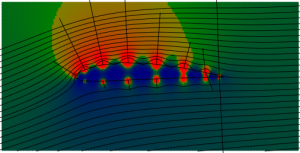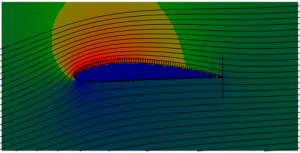Aerospace engineers encounter vortex methods as undergraduates. The famous thin airfoil theory is a continuous vortex sheet. The famous XFOIL is a panel method with an IBL solver for viscous effects.
Q: Can a simple discrete vortex method capture thickness?
A: Yes, but I would recommend a linear vortex method instead.

NACA 4412 at 10 degrees: 16 Elements
The source code and executable are available here.
The visualization is a pure Fortran library exporting to scalable vector graphics (.svg).

